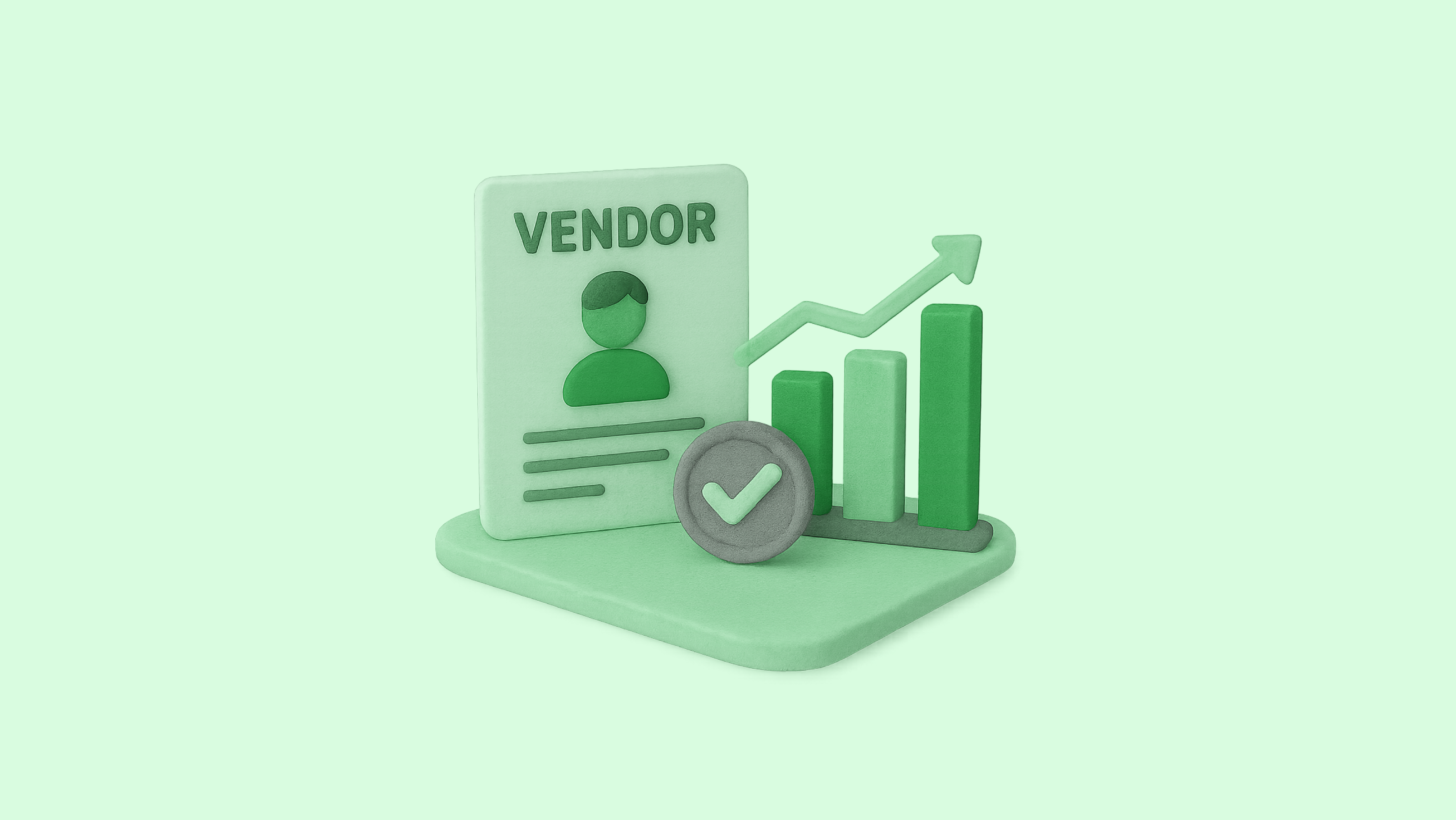Managing vendors effectively is a critical aspect of running a business. Whether a company relies on suppliers for raw materials, services, or technology, the performance of vendors directly impacts operational efficiency, costs, and customer satisfaction. To ensure that vendors deliver as expected, businesses use vendor performance indicators. These indicators help track how well vendors are meeting their commitments and allow companies to make informed decisions.
Tracking vendor performance is not just about identifying underperforming suppliers. It also highlights areas where vendors excel, enabling stronger collaboration and long-term partnerships. In this blog, we will explore key procurement KPIs and metrics, methods to measure vendor reliability, and strategies to monitor vendor compliance effectively.
Understanding Vendor Management KPIs
Vendor management KPIs are measurable values that indicate how well a vendor is performing against expectations. These metrics are essential tools for procurement teams, supply chain managers, and finance departments. By monitoring KPIs, businesses can identify potential risks, optimize costs, and maintain quality standards.
Vendor management KPIs are typically classified into two types:
- Quantitative KPIs: These are measurable using numbers, such as delivery time, cost, or defect rates.
- Qualitative KPIs: These focus on subjective aspects like communication effectiveness, responsiveness, or innovation.
Combining both types of KPIs provides a complete view of a vendor’s performance.
Key Vendor Management KPIs to Track
Here are some of the most important vendor performance indicators businesses should monitor:
1. On-Time Delivery Rate
Timely delivery is crucial for smooth operations. Measuring the percentage of orders delivered on time helps assess a vendor’s reliability. Consistently late deliveries can disrupt production schedules and affect customer satisfaction. Tracking this KPI allows businesses to identify patterns and work with vendors to improve delivery performance.
2. Quality Compliance
Quality compliance evaluates whether a vendor meets the agreed standards for products or services. This can include defect rates, adherence to specifications, or compliance with industry standards. Vendors who consistently deliver high-quality products help reduce rework, returns, and customer complaints.
3. Cost Performance
Monitoring the cost of goods or services against budgeted amounts is essential for financial control. This includes tracking negotiated prices, discounts, and additional costs incurred due to delays or quality issues. Regular review of cost performance helps businesses manage budgets effectively and negotiate better terms with vendors.
4. Responsiveness and Communication
Effective communication is critical in vendor management. Tracking response times to queries, problem resolution, and willingness to provide updates helps assess a vendor’s reliability beyond just deliveries and costs.
5. Vendor Contract Compliance
Vendor contract compliance measures whether a vendor adheres to the terms agreed in the contract. This includes delivery schedules, service levels, legal requirements, and pricing terms. Monitoring this KPI ensures accountability and reduces the risk of disputes.
6. Innovation and Improvement
Vendors who suggest process improvements, cost-saving measures, or product enhancements can add significant value. Tracking their contribution to innovation helps businesses identify strategic partners who can support growth.
How to Measure Vendor Performance Effectively
Measuring vendor performance requires a systematic approach and accurate data collection. Businesses can use several methods to track performance effectively:
1. Vendor Scorecards
Vendor scorecards consolidate multiple KPIs into a single, easy-to-read format. Each KPI is assigned a weight based on its importance, and vendors are scored regularly. This provides a clear picture of overall performance and highlights areas that need attention.
2. Data Collection Tools
Many organizations use ERP software or procurement management systems to track KPIs. These tools automate data collection and reporting, making it easier to maintain accuracy and consistency.
3. Benchmarking
Setting benchmarks or targets for each KPI allows businesses to evaluate vendors objectively. For example, a target of 95% on-time delivery provides a reference point to measure actual performance.
4. Regular Reviews
Periodic reviews with vendors help maintain transparency. Reviewing procurement KPIs and metrics together allows both parties to discuss challenges, identify improvements, and align expectations.
Benefits of Tracking Vendor KPIs
Tracking vendor KPIs provides multiple benefits to businesses:
- Better Decision-Making: Businesses can identify which vendors consistently perform well and make informed choices about continuing or terminating contracts.
- Cost Optimization: Monitoring cost performance and delivery efficiency helps reduce unnecessary expenses.
- Improved Vendor Relationships: Regular feedback based on objective data builds trust and collaboration with vendors.
- Risk Management: Identifying underperforming vendors early reduces supply chain disruptions.
- Operational Efficiency: With reliable vendors, businesses can improve procurement, production, and service delivery processes.
Best Practices for Vendor Performance Monitoring
To maximize the benefits of vendor management KPIs, businesses should adopt best practices for performance monitoring:
1. Define Clear KPIs
Select vendor performance indicators that align with business goals. Avoid tracking unnecessary metrics that do not impact operations.
2. Maintain Consistency
Measure KPIs consistently over time to identify trends and patterns. This helps in making long-term improvements rather than reacting to one-time issues.
3. Combine Quantitative and Qualitative Metrics
While numbers are important, qualitative insights from communication, collaboration, and problem-solving provide a complete view of vendor performance.
4 . Collaborate with Vendors
Share performance reports and discuss improvement plans openly. Engaging vendors in the process encourages accountability and builds stronger partnerships.
5 .Use Technology
Automated procurement and ERP systems can simplify KPI tracking, reduce errors, and provide real-time insights. Businesses can generate reports and dashboards that make decision-making faster and more accurate.
Conclusion
Tracking vendor performance indicators is essential for businesses seeking operational efficiency, cost control, and strong vendor relationships. By focusing on key procurement KPIs and metrics, measuring vendor reliability, and monitoring vendor contract compliance, organizations can identify the best-performing vendors, improve procurement processes, and reduce risks.
A structured approach to vendor performance monitoring not only ensures consistent quality and timely deliveries but also helps businesses strengthen long-term partnerships with strategic vendors. Businesses that adopt these practices are better positioned to achieve operational excellence and maintain a competitive edge in their industry.





